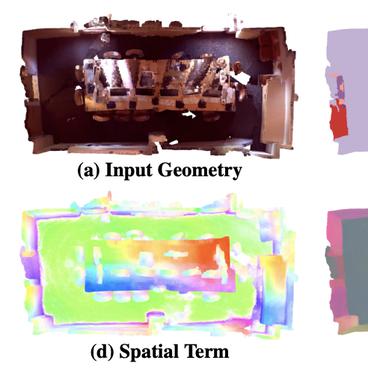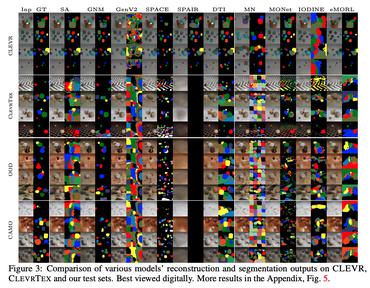Instance Segmentation
964 papers with code • 25 benchmarks • 82 datasets
Instance Segmentation is a computer vision task that involves identifying and separating individual objects within an image, including detecting the boundaries of each object and assigning a unique label to each object. The goal of instance segmentation is to produce a pixel-wise segmentation map of the image, where each pixel is assigned to a specific object instance.
Image Credit: Deep Occlusion-Aware Instance Segmentation with Overlapping BiLayers, CVPR'21
Libraries
Use these libraries to find Instance Segmentation models and implementationsDatasets
Subtasks
-
 Referring Expression Segmentation
Referring Expression Segmentation
-
 3D Instance Segmentation
3D Instance Segmentation
-
 Real-time Instance Segmentation
Real-time Instance Segmentation
-
 Unsupervised Object Segmentation
Unsupervised Object Segmentation
-
 Unsupervised Object Segmentation
Unsupervised Object Segmentation
-
 Amodal Instance Segmentation
Amodal Instance Segmentation
-
 Box-supervised Instance Segmentation
Box-supervised Instance Segmentation
-
 Image-level Supervised Instance Segmentation
Image-level Supervised Instance Segmentation
-
 Unseen Object Instance Segmentation
Unseen Object Instance Segmentation
-
 3D Semantic Instance Segmentation
3D Semantic Instance Segmentation
-
 Open-World Instance Segmentation
Open-World Instance Segmentation
-
 Human Instance Segmentation
Human Instance Segmentation
-
 One-Shot Instance Segmentation
One-Shot Instance Segmentation
-
 Semi-Supervised Person Instance Segmentation
Semi-Supervised Person Instance Segmentation
-
 Point-Supervised Instance Segmentation
Point-Supervised Instance Segmentation
-
 Solar Cell Segmentation
Solar Cell Segmentation
Most implemented papers
Mask R-CNN
Our approach efficiently detects objects in an image while simultaneously generating a high-quality segmentation mask for each instance.
MMDetection: Open MMLab Detection Toolbox and Benchmark
In this paper, we introduce the various features of this toolbox.
Swin Transformer: Hierarchical Vision Transformer using Shifted Windows
This paper presents a new vision Transformer, called Swin Transformer, that capably serves as a general-purpose backbone for computer vision.
YOLACT: Real-time Instance Segmentation
Then we produce instance masks by linearly combining the prototypes with the mask coefficients.
Deep High-Resolution Representation Learning for Visual Recognition
High-resolution representations are essential for position-sensitive vision problems, such as human pose estimation, semantic segmentation, and object detection.
Deep High-Resolution Representation Learning for Human Pose Estimation
We start from a high-resolution subnetwork as the first stage, gradually add high-to-low resolution subnetworks one by one to form more stages, and connect the mutli-resolution subnetworks in parallel.
Microsoft COCO: Common Objects in Context
We present a new dataset with the goal of advancing the state-of-the-art in object recognition by placing the question of object recognition in the context of the broader question of scene understanding.
YOLACT++: Better Real-time Instance Segmentation
Then we produce instance masks by linearly combining the prototypes with the mask coefficients.
ResNeSt: Split-Attention Networks
It is well known that featuremap attention and multi-path representation are important for visual recognition.
Res2Net: A New Multi-scale Backbone Architecture
We evaluate the Res2Net block on all these models and demonstrate consistent performance gains over baseline models on widely-used datasets, e. g., CIFAR-100 and ImageNet.


























 MS COCO
MS COCO
 Cityscapes
Cityscapes
 nuScenes
nuScenes
 ADE20K
ADE20K
 NYUv2
NYUv2
 LVIS
LVIS
 BDD100K
BDD100K
 KITTI-360
KITTI-360
 YouTube-VIS 2019
YouTube-VIS 2019
 Objects365
Objects365

